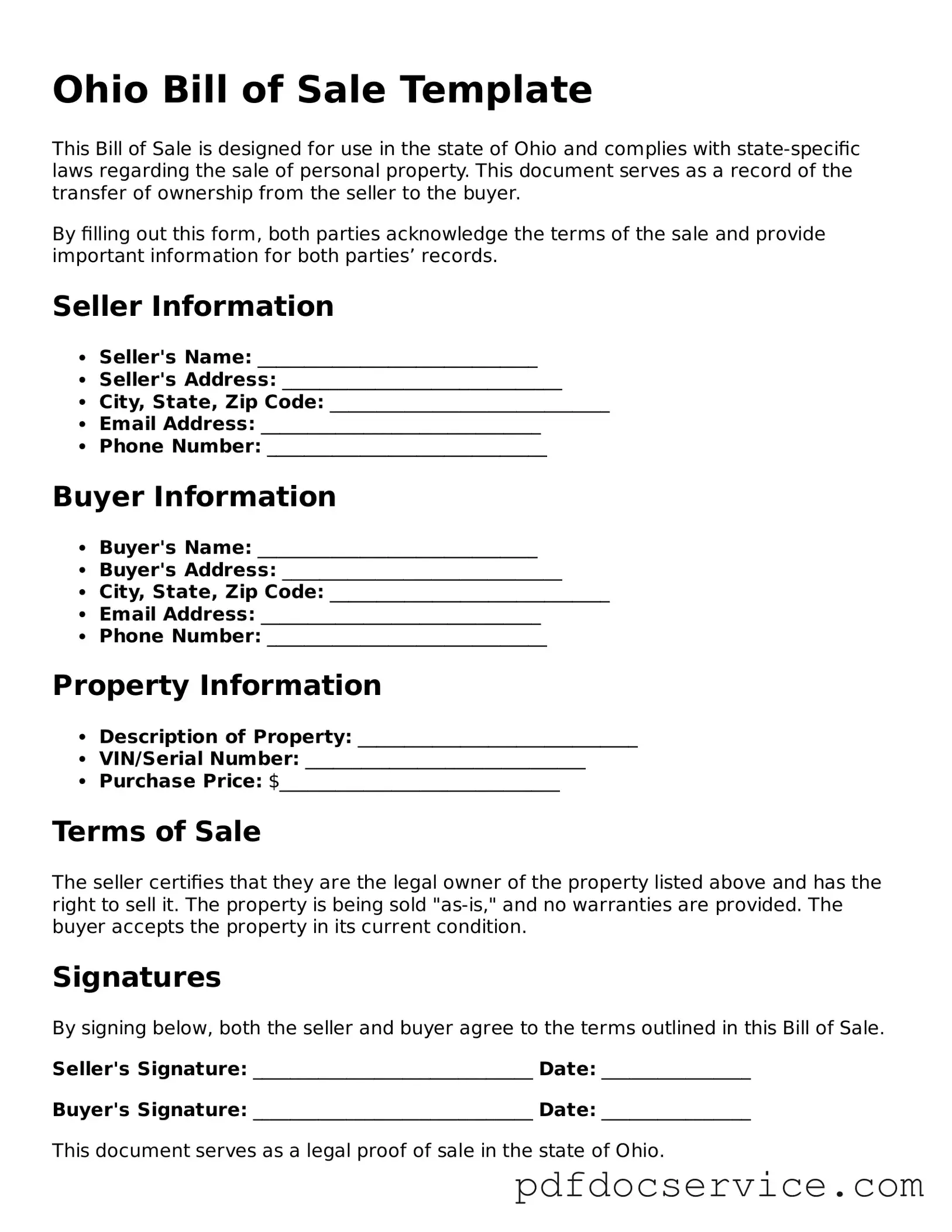What is a Bill of Sale in Ohio?
A Bill of Sale is a legal document that serves as proof of the transfer of ownership of personal property from one person to another. In Ohio, this form is commonly used for transactions involving vehicles, boats, and other tangible goods. The document outlines the details of the sale, including the names of the buyer and seller, a description of the item being sold, and the sale price.
Is a Bill of Sale required in Ohio?
While a Bill of Sale is not legally required for all transactions in Ohio, it is highly recommended. For vehicle sales, the Ohio Bureau of Motor Vehicles (BMV) requires a Bill of Sale to register the vehicle under the new owner's name. This document provides essential proof of the transaction, protecting both the buyer and seller in case of future disputes.
An effective Bill of Sale in Ohio should include the following information:
-
Names and addresses of both the buyer and seller
-
Date of the transaction
-
Description of the item being sold (make, model, year, VIN for vehicles)
-
Sale price of the item
-
Signatures of both parties
Including this information helps ensure that the document is complete and legally enforceable.
Can I create my own Bill of Sale in Ohio?
Yes, you can create your own Bill of Sale in Ohio. It is important to ensure that the document includes all necessary information to be valid. Many templates are available online, which can simplify the process. However, if you have concerns about legal language or specific requirements, consulting with a legal professional is advisable.
How does a Bill of Sale protect both the buyer and seller?
A Bill of Sale protects both parties by providing a written record of the transaction. For the buyer, it serves as proof of ownership and can be essential for registering the item or vehicle. For the seller, it offers protection against future claims regarding the item, as it documents that the item was sold and the terms of the sale. This mutual protection helps to prevent disputes and misunderstandings.
Do I need to have the Bill of Sale notarized?
In Ohio, notarization of a Bill of Sale is not typically required. However, having the document notarized can add an extra layer of authenticity and may be beneficial in certain situations, particularly for high-value items or if there is a possibility of disputes. It is wise to check specific requirements based on the type of transaction you are conducting.
Bill of Sale forms can be obtained from various sources. Many websites offer free or paid templates that can be customized to fit your needs. Additionally, local government offices, such as the BMV, may provide official forms specifically for vehicle sales. Ensure that you choose a reputable source to obtain a valid and legally compliant document.
